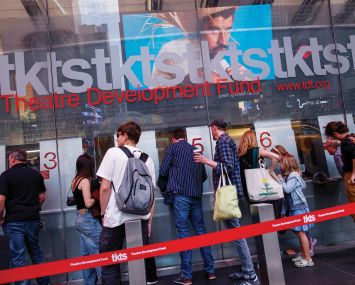Presented By: Goulston & Storrs
What’s Next for Opportunity Zones?
By Goulston & Storrs December 10, 2018 9:32 am
reprints
Real estate developers, fund sponsors and property owners have been eagerly awaiting guidance on the new Qualified Opportunity Zone (“QOZ”) provisions included in last December’s Tax Cuts and Jobs Act. On October 19, 2018, the IRS issued the proposed regulations. While the proposed rules would generally be effective only after they are issued as final regulations, taxpayers are permitted to rely on the proposed regulations, so long as they rely on them in their entirety and in a consistent manner.
The proposed regulations include some favorable rules that should make the QOZ incentive a powerful tool for raising money or making investments in QOZs.
By way of background, the new QOZ incentive provision allows taxpayers who recognize a gain from the sale of an asset (including non-real estate assets like stocks or securities) to defer the tax on the gain by reinvesting the proceeds from the sale within 180 days into a Qualified Opportunity Fund (“QOF”) formed and operated for the purpose of investing in certain QOZs which have been designated in all fifty states. A map of all QOZs can be found HERE.
Gains reinvested into a QOZ can be deferred until December 31, 2026 (with a small portion of the deferred gain potentially escaping tax altogether if the investment is made before December 31, 2019 or December 31, 2021). More significantly, if the investment in the QOF is held for more than 10 years, then the basis of the investment is treated as being equal to its fair market value on the date the investment is sold, and all of the future gain on the investment is effectively exempt from tax.
The proposed regulations clarify that only capital gains or gain treated as capital gain (such as section 1231 gains from the sale of real property) are eligible for deferral. Thus, ordinary income recapture arising from the sale of depreciable personal property would not be eligible for deferral. However, unrecaptured section 1250 gains resulting from the recapture of real estate depreciation may be eligible. In addition, the regulations provide that the gain cannot arise from a sale of property to a related party. This restriction will prevent a taxpayer from selling property to a related party (using a stricter 20% ownership threshold to determine relatedness) in order to generate a gain eligible for the QOZ deferral and exclusion.
Where a partnership or other pass-through entity recognizes a gain from a sale of property, the investment in the QOF may be made by either the partnership or by the individual partners to whom the gain was allocated. Likewise, it appears that where a REIT recognizes a capital gain, the investment in the QOF may be made by either the REIT itself or by any shareholders who receive a capital gain distribution from the REIT.
Preferred equity investments in a QOF are eligible for the deferral and exclusion and taxpayers are permitted to collateralize a loan with their QOF investments. These rules will enable taxpayers to monetize gains that are deferred by investing the proceeds into a QOF and borrowing against the investment.
The proposed regulations clarify that deemed contributions of money under section 752 as a result of partnership-level borrowings are not treated as an additional investment in the QOF. There is some uncertainty as to how the debt allocated to the investor is accounted for in determining the investor’s basis step-up, but the intent of the rule appears to be to allow taxpayers to leverage their QOF investments without having to bifurcate future gains and to thereby qualify the entire gain from the investment for tax free treatment if the investment is held for ten years.
In a Revenue Ruling published together with the proposed regulations, the IRS confirmed that land located in a QOZ cannot satisfy the original use requirement since the land is treated as having been in use on or before December 31, 2017. However, in a significant relaxation of the substantial improvement requirement, the IRS ruled that to satisfy the substantial improvement requirement, it is sufficient for the taxpayer to spend an amount equal to the cost of the existing building located on the land, even if the majority of the taxpayer’s cost is attributable to the underlying land. As an example, suppose a taxpayer purchases an existing warehouse in a QOZ for $10 million for redevelopment into residential property, of which $1 million is allocable to the existing building and $9 million to the land. Under the ruling, the taxpayer could satisfy the substantial improvement requirement for both the land and building by expending $1 million over the first 30 months following the acquisition. It is not clear whether this rule is intended to apply even to vacant land, such that a minimal investment would meet the substantial improvement requirement or whether the taxpayer would be required to spend an amount equal to the cost of the land if there is no existing building.
The proposed regulations allow gain triggered from a complete sale of an investment in a QOF to be deferred by reinvesting the proceeds in a new QOF investment within 180 days.
For purposes of a QOF satisfying the requirement that 90% of its assets be invested in QOZ property, the statute provides that compliance with the 90% requirement must be met on the last day of the taxable year as well as on “the first 6-month period of the taxable year” (e.g., June 30 for a calendar year taxpayer). The proposed regulations provide that in the case of the QOF’s first taxable year, the first six-month period testing date will be six months after the fund is formed (e.g., a calendar year QOF formed on April 1 will have its first testing date on September 30, unless the QOF is formed after June 30, in which case the first testing date will be December 31, the last day of its taxable year).
The proposed regulations provide a generous safe harbor under which cash or other financial property held by the fund for the purpose of acquiring or improving real property will be treated as a disqualifying asset for purposes of the 90% test for a period of up to 31 months, provided that:
- There is a written plan that identifies the financial property as property held for the acquisition, construction, or substantial improvement of tangible property in the opportunity zone;
- There is a written schedule consistent with the ordinary business operations of the business that the property will be used within 31 months; and
- The business complies with the schedule.
For real estate fund sponsors hoping to form QOFs, this provision may be the single most important one in the proposed rules, as it will give fund managers the flexibility to raise pools of capital from investors without the need to immediately deploy all of the capital.
Disclaimer: This advisory should not be construed as legal advice or legal opinion on any specific facts or circumstances. The contents are intended for general informational purposes only, and you are urged to consult your own lawyer concerning your situation and any specific legal questions you may have.


